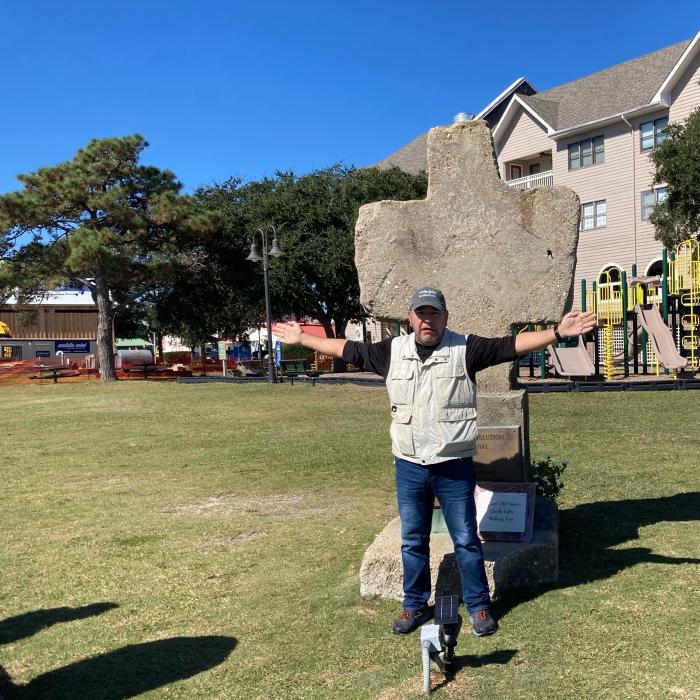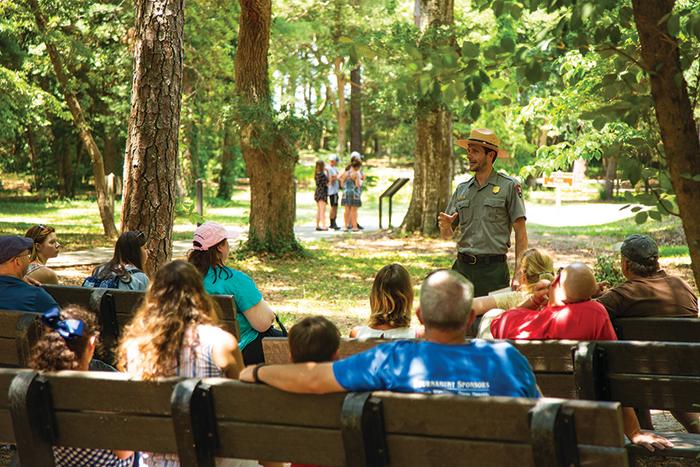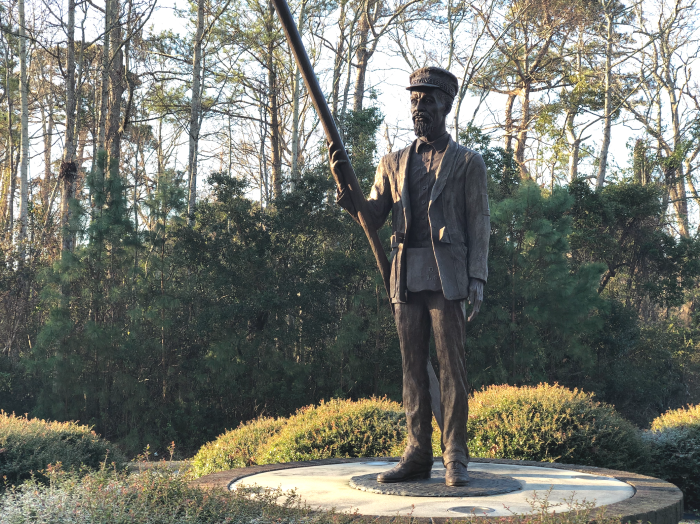The Manteo Historic Walking Tour left a lasting impression on me during a visit to the Outer Banks in the fall. Retired police chief Francis D’Ambra made the area’s remarkable history come alive sharing intriguing stories while escorting my group along the charming streets of Manteo.
“The firsts of history happened within ten miles of where you’re standing. I call this the ‘Line of Freedom’ from where the original lighthouse stood, to the Revolutionary War marker in town, to the replica ship of Elizabeth II that the colonists came over on,” D’Ambra explained. “It is a straight line with over 400 years of American freedom represented. (The Outer Banks) are first in freedom in every era from the late 16th century, including the Revolutionary War and the Civil War. It makes my heart swell.”

No other history tour of the Outer Banks brings home the area’s historical significance the way D’Ambra does. I found the experience both education and fun, all while strolling through beautiful Manteo – pronounced by locals without the “t.”
“The first light of freedom was when African American slaves during the Civil War period prior to the capture of Roanoke Island were trying to escape to come to the North seeking freedom,” D’Ambra says with pride and passion. “They would get to Mann’s Harbor and they could see the Roanoke Marshes Lighthouse in the channel of the Croatan Sound. They called that the first light of freedom. They knew if they waded across the Croatan Sound to Haven Creek, they would find a safe haven on Roanoke Island.” There is a monument at Fort Raleigh National Park that details the first light of freedom.

Roanoke Island became home to a new community called the Freedmen’s Colony, a place of refuge for the formerly enslaved seeking freedom. The first Freedmen Colony in the United States was established here in 1863 by General Ambrose Burnside of the Union Army.
Visitors quickly learn that the Outer Banks’ two most famous firsts, first English settlement in the “New World” and first powered flight at Kitty Hawk by the Wright brothers, overlook a great deal of other, equally fascinating, firsts. First moonshine capital of the world. First English child born here. First stop on the underground railroad. First in boat building. First African Methodist Episcopal (AME) Zion church established here by Andrew Cartwright, formerly enslaved. This is known as “The Freedom Church.”
“There are other places in the United States where you can get history, (but) there is no other place in the United States (where) every significant era of history from the late 16th century to modern history where you can point to the firsts in history within ten miles of where you’re standing,” D'Ambra said. “You can do that here.”

Another fascinating first is Captain Richard Etheridge, the first African American keeper of the Lifesaving Station in the United States along with his entire African American crew. They saved the crew of the E.S. Newman that went down near Pea Island. They earned bronze stars for their lifesaving. They were all formerly enslaved and descendants of the Freedmen Colony of Roanoke Island. Captain Etheridge started the first lifesaving station, which is now called the United States Coast Guard. A statue of Captain Etheridge stands holding a bronze oar that points to Pea Island.
It's all part of our American story. America, land of the free. Where they made history, you can make memories. Connect to the Outer Banks many firsts and let D’Ambra get you started on your journey.


